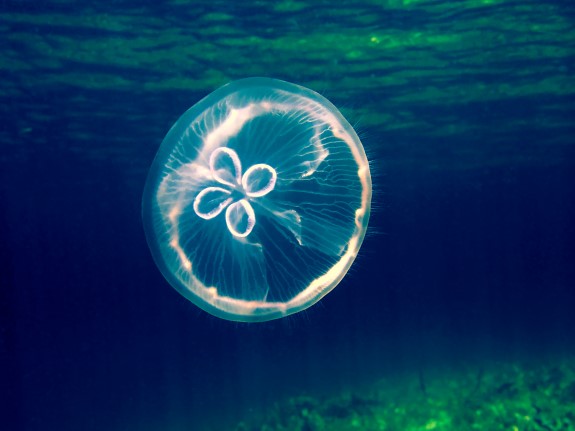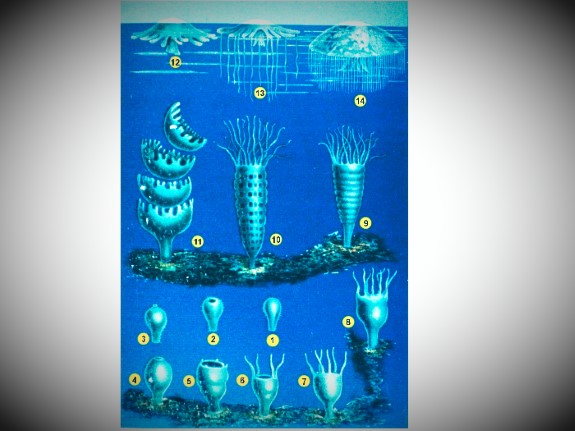Summertime at the beach is a family tradition for Franklin County residents and many visitors from inland regions far and wide. As the Gulf waters warm and more

people take a dip you will begin to hear more exclamations of “ouch, something just stung me!” We host an amazing diversity of marine organisms that possess the ability to sting when brushed against. I’m referring to organisms in the phylum Cnidaria (pronounced “ni-dair-ee-uh”), which includes about 10,000 species worldwide. There are five different classes of cnidarians, all with stinging cells (nematocysts), but most of which are harmless to humans. These include Class Anthozoa (anemones and corals), Class Cubozoa (box jellyfish), Class Scyphozoa (true jellyfish), Class Staurozoa (stalked jellyfish) and Class Hydrozoa (hydroids i.e. Portuguese man o’ war). The group names originate from the greek (Cnides: meaning nettle, Antho: flower-like; Cubo: cube-shaped; Scypho: cup-shaped; Hydros: sea serpent; Stauro: cross-shaped). The term “zoa” refers to animals.
Most stings involve the classes Hydrozoa or Scyphozoa. Hydrozoans are a complex group of animals and most go through two distinct stages during their life cycle. The hydroid stage takes the form of a polyp composed of a stalk with tentacles at the end. Polyps can be single but are often colonial, connected by tube-like structures. Most polyps are specialized for feeding but others are used to reproduce. These form the medusa stage of the organism. Some hydroids also have specialized defensive polyps with numerous stinging cells and the man o’ war even has a specialized polyp that develops into the large balloon-like float that the others attach to. There is one specific type of hydroid in our area that resembles a piece of brown algae. The polyps are scattered along the branches and produce a painful sting when brushed against. The burning sensation can last for several minutes and you would have sworn the only thing around you was a harmless piece of drift algae.
True jellyfish of Class Scyphozoa also go through a polyp and medusa stage. The polyps are typically single and settle to the bottom as larvae and attach there. Over time they mature and produce other polyps by budding, or bud medusae off their upper surface. These medusae are microscopic at this stage and many take years to mature, complete with a cup-shaped bell and tentacles hanging beneath (scypho= cup shaped).

The subsequent lives of these translucent marine creatures are no less intriguing than the processes involved in their development. The next time you feel the burn of nematocysts injecting you with their potent venom, I dare you to stop for just a second to be amazed by the fascinating creature that you have just met. If you can pull this off you are well on your way to becoming the quintessential nature nut!
 0
0
